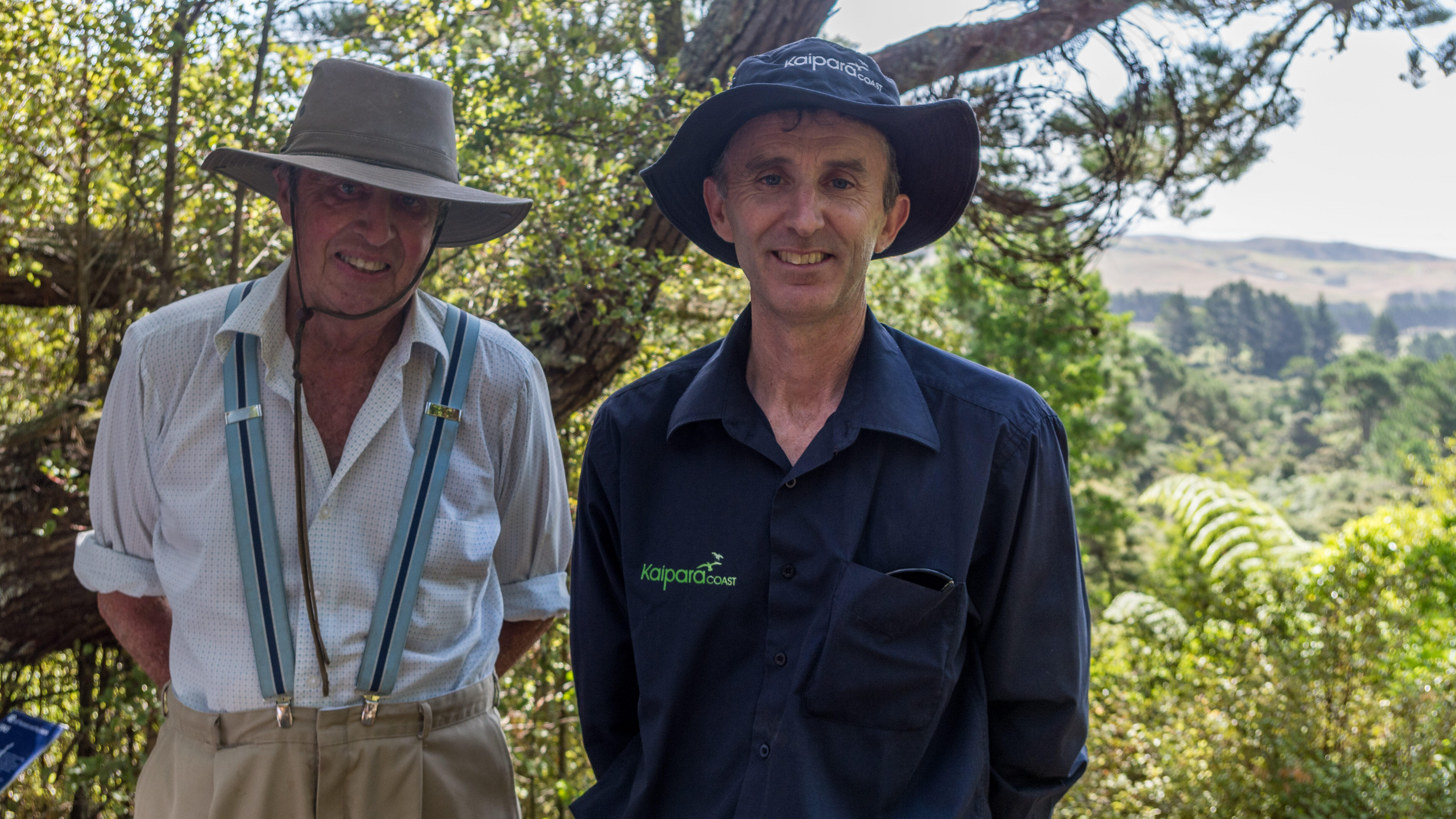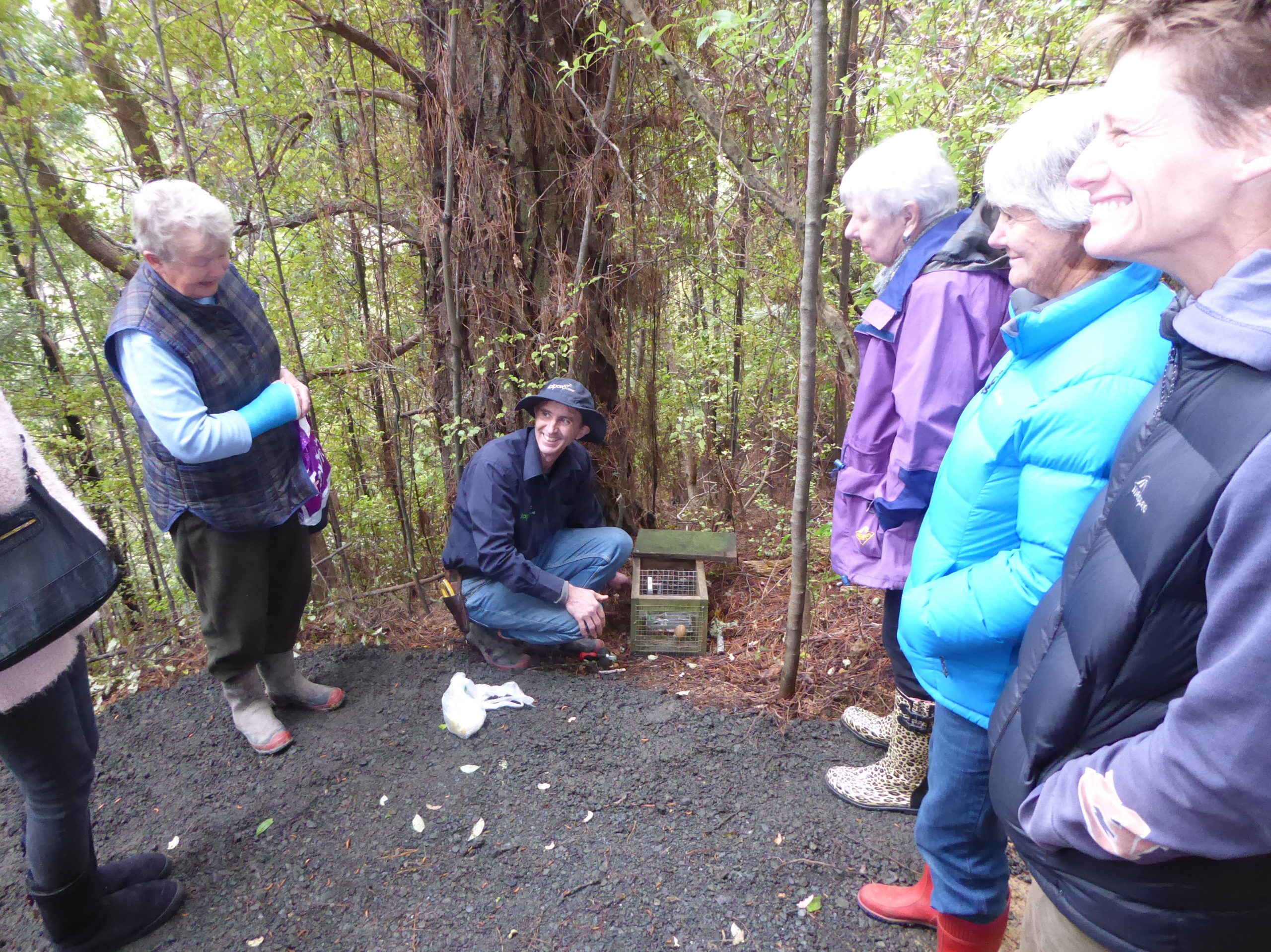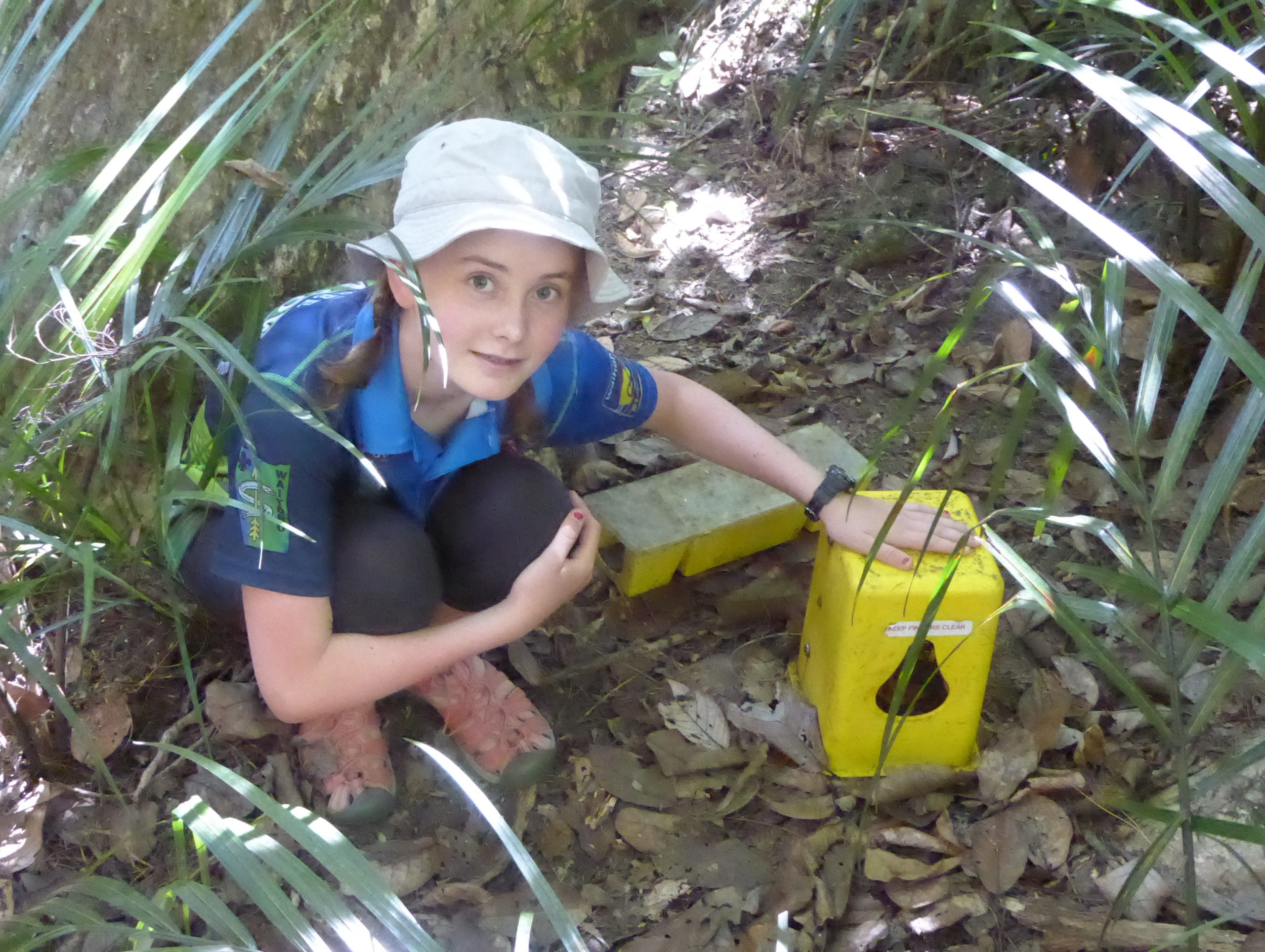Three generations of the Bayly family are involved in trapping predators on the family farm on the Kaipara Coast, half an hour’s drive north of Auckland. David Bayly’s parents, Don and Margaret bought the land back in 1960 and Don Bayly started actively trapping 20 years ago. Back then, there was next to no birdlife and the family have enjoyed watching the birdlife come back. Some of those birds have repaid the favour in unexpected ways.

“Twenty-five years ago we subdivided off some of the farm for a plant nursery and garden centre,” explains Don’s son, David, who runs the nursery with his wife Geraldine. “When the nursery started we used to get major insect attacks, but in the last 10 years we’ve hardly used any insecticide sprays. Now we don’t use sprays at all. We have lots of fantails flitting around catching insects instead.”
As well as the fantails there are grey warblers, ruru and seasonal visits from shining cuckoo. A long-tailed cuckoo has been spotted too and tui, which were always present in low numbers are now living permanently on the farmland and can be seen in flocks.
“It’s been quite neat to see kereru gradually increasing over the last 6 years,” says David. “We’ve got 300 – 400 year old trees, including a 400 year old puriri tree, as well as regenerating forest on land that Dad cleared 40 years ago. But if possums were left to their own devices they’d kill that puriri tree in 4-5 years. We use DOC 200 and Timms traps, along with an enthusiastic Jack Russell dog.”
About 10 years ago, the Baylys set up a sculture trail in the 5-acre garden attached to their nursery, with a walk of about 1km.
“There are 40 – 50 sculptures by New Zealand artists that are changed every 12 months,” says David. “Then about 5 years ago we developed a 1km conservation trail through the native bush. We have school groups visit that I take around the conservation trail.”

David has developed a programme for the visiting busloads of school children up for the day from Auckland.
“I get everyone to be quiet and listen to the birdlife. Then we look at the traps – the DOC 200 goes off with a lovely big bang! We talk about trap safety and also look at the Timms traps. We catch 1 or 2 possums per week, so we usually have something in the trap to show. I talk about how the traps work, how the animal gets caught, the damage the animals do and why we catch them.”
When David asks what predators live in the forest, he can get some pretty wide-ranging answers.
“According to the kids, there are lions, crocodiles…” he says. “Beside each trap we have larger than life-size cut-outs of the actual predators we’re trapping. Some of the older kids ask ‘why do you have to do that’ and I ask them which is more important – a possum that came from Australia or a 400 year old tree. The children are quite open-minded and they understand.”
David also talks about water quality, the seeds spread by birds and the seedlings on the ground that wouldn’t be growing if there were possums.

After 20 years – with Don’s meticulous recording of predator trapping, a good picture of the local predator situation has built up.
“Trapping numbers are pretty consistent,” says David. “We’re an island of control with others not controlling predators. We’ve got surrounding forest and pine plantation and if we stopped trapping, the predators would all be back very quickly.”
Fortunately trapping and conservation are something that all generations of the Bayly family are enthusiastic about.
“Dad is always pretty good at checking the traps in the pastures around the farm,” says David, “But last year he wasn’t well and our 12-year-old daughter took over walking around the traps, baiting and setting the traps, disposing of the carcasses and recording the results.”
Recently Bianca turned 13 – and was thrilled to be given a new trap for her birthday, by her grandfather. The Baylys are also about to add some self-resetting traps to their predator control efforts.
“We had a pest control workshop at the Plant Centre a few weeks ago where Sean O’Brien from Goodnature gave us a presentation of how his traps worked and the effectiveness of the traps. Following that workshop we were all so impressed that we purchased a number of the traps.”
Earlier this year, the Bayly family were Auckland regional winners of the Predator Free Farm Award, part of the Ballance Farm Environment Awards. Both the conservation trail and sculpture garden are open to the public and are located half an hour’s drive up from Auckland. There is an entry fee to visit the Kaipara Coast Sculpture Garden. Because of the wildlife present, no dogs are allowed.

